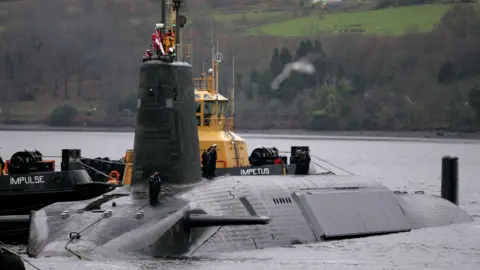The recent Spending Review announced by Chancellor Rachel Reeves is set to significantly reshape Scotland’s fiscal landscape and priorities for the forthcoming years. The review has earmarked substantial funding for critical sectors including defence, technology, and sustainability initiatives, indicating a broader strategy to bolster economic growth and address emerging challenges.
One of the most notable allocations is the £250 million dedicated to the Royal Navy’s nuclear submarine base at HM Naval Base Clyde in Faslane. This facility is pivotal for the UK’s naval capabilities and the funding is likely to support job creation and skill development within the local community. Additionally, a significant investment of £750 million is authorized for establishing the UK’s most powerful supercomputer at the University of Edinburgh. This technological advancement promises to propel cutting-edge research in various fields, such as climate change and personalized medicine.
Beyond defence and computing, the Spending Review also backs the Acorn Project located at St Fergus, which aims to utilize carbon capture and storage (CCS) technology. This initiative will play a crucial role in reducing greenhouse gas emissions by storing them under the North Sea. As the urgency of combating climate change intensifies, such projects are increasingly viewed as essential investments for sustainable development.
Nevertheless, the process of finalizing budget allocations requires a careful balancing act. There are numerous competing demands for public funds across different sectors. For instance, while defence spending is receiving an uplift to tackle modern challenges, other areas may face squeezes. It remains to be seen whether there will be a radical overhaul of existing budgets, considering contractual and manifesto commitments already in place which may limit flexibility for sweeping changes.
The crux of the Spending Review centers on day-to-day spending, which is designed to manage allocations for current and capital expenditures over the next few years. This framework is structured around totals pre-set by the Office for Budget Responsibility (OBR) and focuses on the sensible allocation of resources without diluting necessary services. The anticipated average increase in day-to-day spending is about 1.2% per year through to 2028-29.
While there is optimism surrounding capital spending, particularly as it can be funded through borrowing, day-to-day budgets present a more stringent challenge as only minor increases are projected. Commitments have been made to enhance funding for immediate necessities, such as healthcare and childcare, which indicate a prioritization of essential services over more discretionary expenditures. This focus on immediate needs tends to pressure sectors like local government and justice, which historically have borne the brunt of tightening budgets.
The UK’s devolved administrations, including Scotland, will feel the effects of these decisions as they translate into block grants that pass from Westminster. Any additional funding in areas like the NHS could potentially benefit the Scottish government’s budget, while cuts in other sectors might impose more profound, challenging realities for local governance.
What’s particularly crucial in this context is the fiscal strategy of Holyrood, headed by Finance Secretary Shona Robison, as she navigates these changes. The enhanced funding for healthcare and childcare announced in the Spending Review could alleviate some financial strain on her budget. Nevertheless, she must also determine how to address competing demands, such as improving public service infrastructure versus investing in economic growth projects like transport.
As Scotland prepares for these fiscal shifts, the Spending Review undoubtedly sets the stage for shaping public services and broad economic strategies for years to come. However, the actual implementation of these plans may hinge on the responsiveness of Holyrood to the changing fiscal landscape and its ability to balance immediate needs with long-term growth ambitions. The ongoing economic climate and political dynamics will continue to play a critical role in how these budgetary challenges unfold moving forward.



